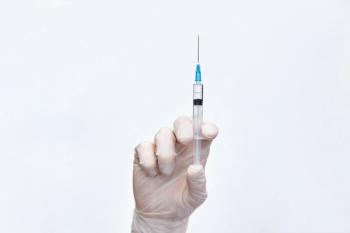
ISMP Offers Safe Practice Recommendations to Reduce COVID-19 Vaccine Errors
ISMP identified the most commonly reported errors and hazards associated with the new COVID-19 vaccines.
The Institute for Safe Medication Practices (ISMP) provided safe practice recommendations for the administration of new coronavirus disease 2019 (COVID-19) vaccines following numerous reports of errors or hazards.1
Missteps identified in the reports included dilution errors, vaccine and monoclonal antibody mix-ups, waste of doses, administration to wrong age group, second dose scheduling errors, and allergic reactions.1
As of January 15, 2021, approximately 12.2 million individuals have received the first dose of a COVID-19 vaccine and about 31.1 million doses have been distributed in total.2 In recent weeks, the Trump administration urged states to
According to ISMP, the main categories of errors being reported so far with the Pfizer-BioNTech and Moderna COVID-19 vaccines include1:
- Dilution errors: The Pfizer-BioNTech COVID-19 vaccine must be diluted with preservative-free sodium chloride injection. Multiple errors have occurred, involving the addition of too little diluent, which results in administration of too much vaccine and potentially stronger adverse effects (AEs) if they occur.
- Mix-ups with look-alike products: Moderna’s vaccine and the new Regeneron monocloncal antibody casirivimab have been confused, likely due to labeling issues. Two versions of vial and carton labels for the Regeneron antibody exist, and neither version includes the name of the specific antibody, casirivimab, or has a functioning barcode.
- Waste of vaccine doses: ISMP has received reports that some of the syringes being shipped as part of the federal COVID-19 response are not efficient enough to extract a sixth dose from the Pfizer-BioNTech vaccine vials or an eleventh dose from the Moderna vaccine. Since both vaccines must be used within 6 hours at room temperature, some facilities are scrambling at the end of the day to use doses or have to discard them.
Other reported errors include a misspelling in an email address that resulted in the patient not receiving information on appointment to receive a second vaccine dose, the vaccination of underage patients, and serious but not life-threatening allergic responses.
To help reduce risk, ISMP offered recommendations for health care organizations1:
- Safely select vaccination sites. Allow enough space to assess the patient prior to vaccination, observe them afterwards, and treat any who experience a reaction, while maintaining social distancing and other precautions.
- Verify competency of vaccinators. Health care providers should be educated regarding vaccine storage, preparing for administration, and common errors that can occur. Provide vaccinations with an up-to-date Fact Sheet for the vaccines being administered and verify their key competencies.
- Dispense pharmacy-prepared syringes. If feasible within the timeframe for vaccine stability at room temperature, have the pharmacy confirm the number of verified appointments and dispense prefilled, labeled syringes for daily vaccination clinics. Check that the needle cap is tight on each syringe before dispensing.
- Use an independent double-check. Require an independent double-check of the dilution process when administering the Pfizer-BioNTech vaccine, if staffing permits.
- Maximize doses withdrawn from vials. Whenever possible, use low dead-volume syringes/needles to withdraw as many doses as possible of the COVID-19 vaccine from each vial to reduce waste.
- Identify/differentiate monoclonal antibodies. If Regeneron monoclonal antibodies are received in investigational drug packaging without the product name on the outer carton or vial, establish a process to be implemented immediately upon receipt to identify and differentiate from other medications, including the Moderna COVID-19 vaccine.
- Separate vaccine storage. Do not store the Pfizer-BioNTech and Moderna vaccines together in the refrigerator while or after thawing; use separate shelves.
- Plan for leftover vaccine. Use a standard process, such as a list of readily available alternative recipients, for dealing with doses remaining in vaccine vials or pharmacy-prepared syringes at the end of a vaccination clinic.
- Prepare for allergic reactions. Make sure emergency equipment and medications are immediately available at vaccination sites. Patients should be monitored for at least 15 minutes after receiving the vaccine for signs of adverse reaction, and at least 30 minutes if there is a history of allergic reaction to a vaccine or injectable therapy or history of anaphylaxis. Avoid vaccinating patients with a known reaction to ingredients such as polyethylene glycol, or with a reaction of any severity to polysorbate due to cross-reactivity to polyethylene glycol.
- Verify second dose scheduling. Establish a system for setting up/confirming appointment for a second dose. Consider a “hotline” for questions and providing the number to patient at the time of their first dose.
- Report vaccine errors and adverse reactions. All COVID-19 vaccine errors and adverse reactions can be reported to the Vaccine Adverse Event Reporting System (VAERS) at
https://vaers.hhs.gov , which is mandatory for health care providers. ISMP also recommends providers to report vaccine errors to the ISMP National Vaccine Errors Reporting Program athttps://ismp.org/report-medication-error .
Read ISMP’s
References
- ISMP. Learning from Errors with the New COVID-19 Vaccines. January 14, 2021. Accessed January 18, 2021.
https://ismp.org/resources/learning-errors-new-covid-19-vaccines - CDC. COVID-19 vaccinations in the United States. Last updated January 15, 2021. Accessed January 18, 2021.
https://covid.cdc.gov/covid-data-tracker/#vaccinations
Newsletter
Pharmacy practice is always changing. Stay ahead of the curve with the Drug Topics newsletter and get the latest drug information, industry trends, and patient care tips.















































































































